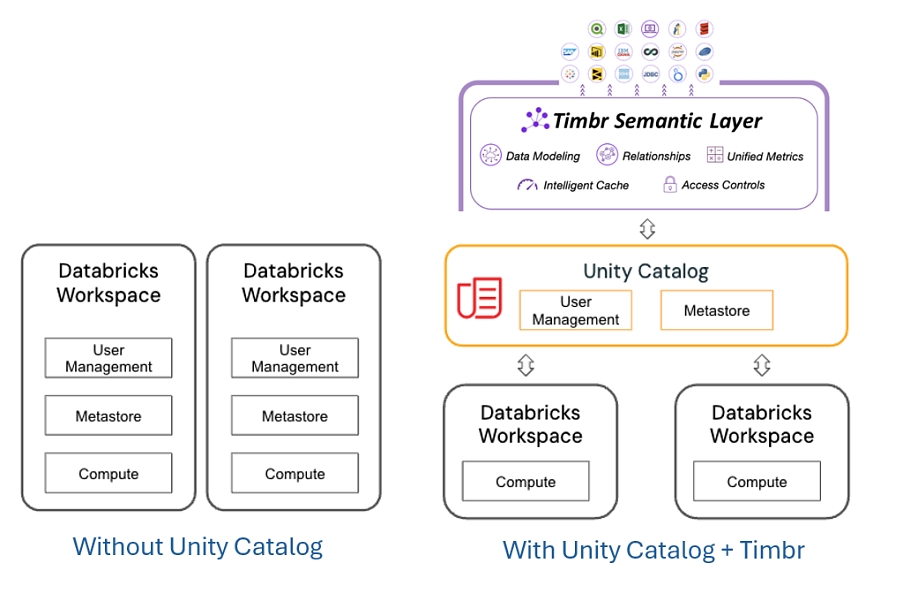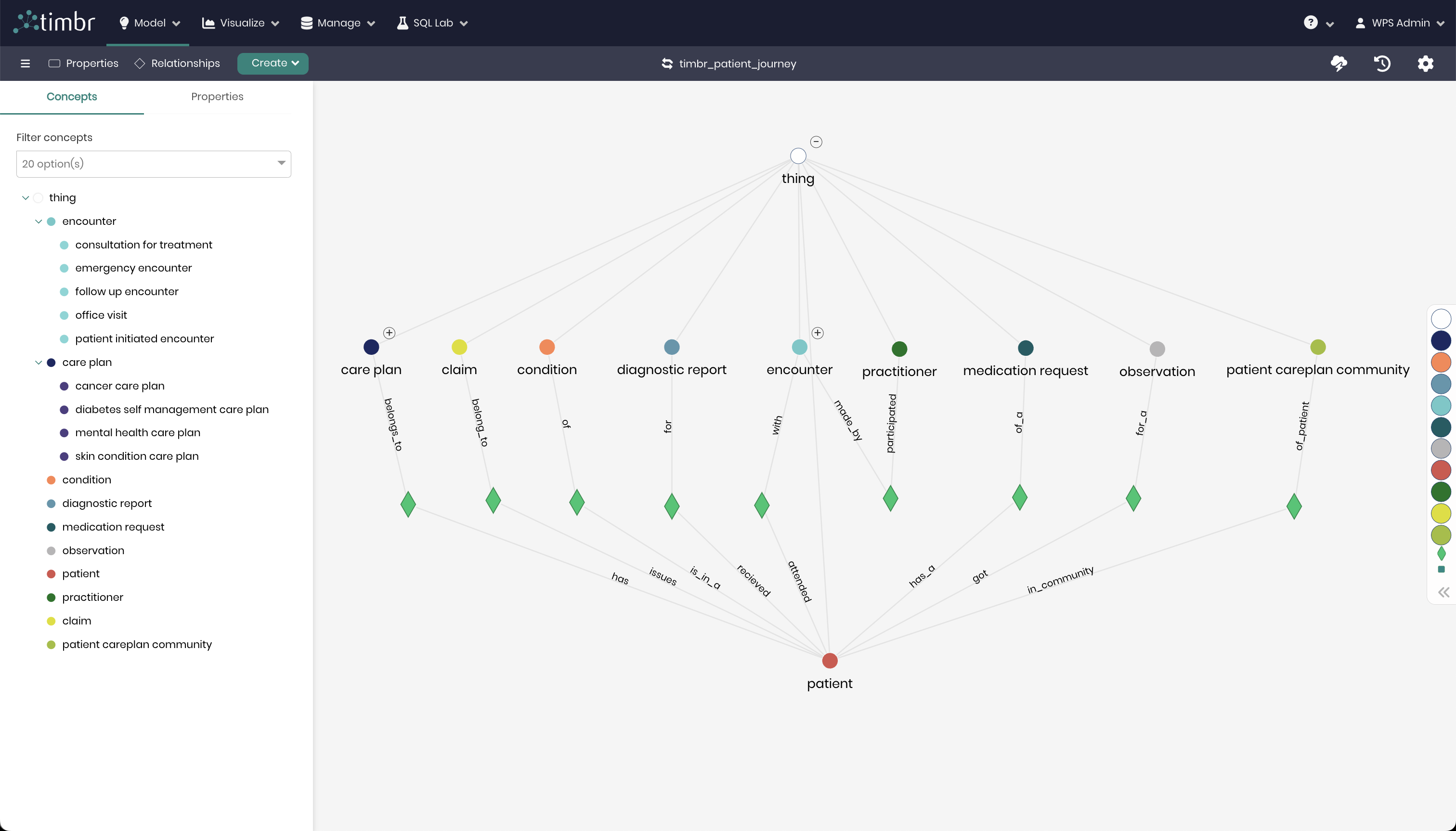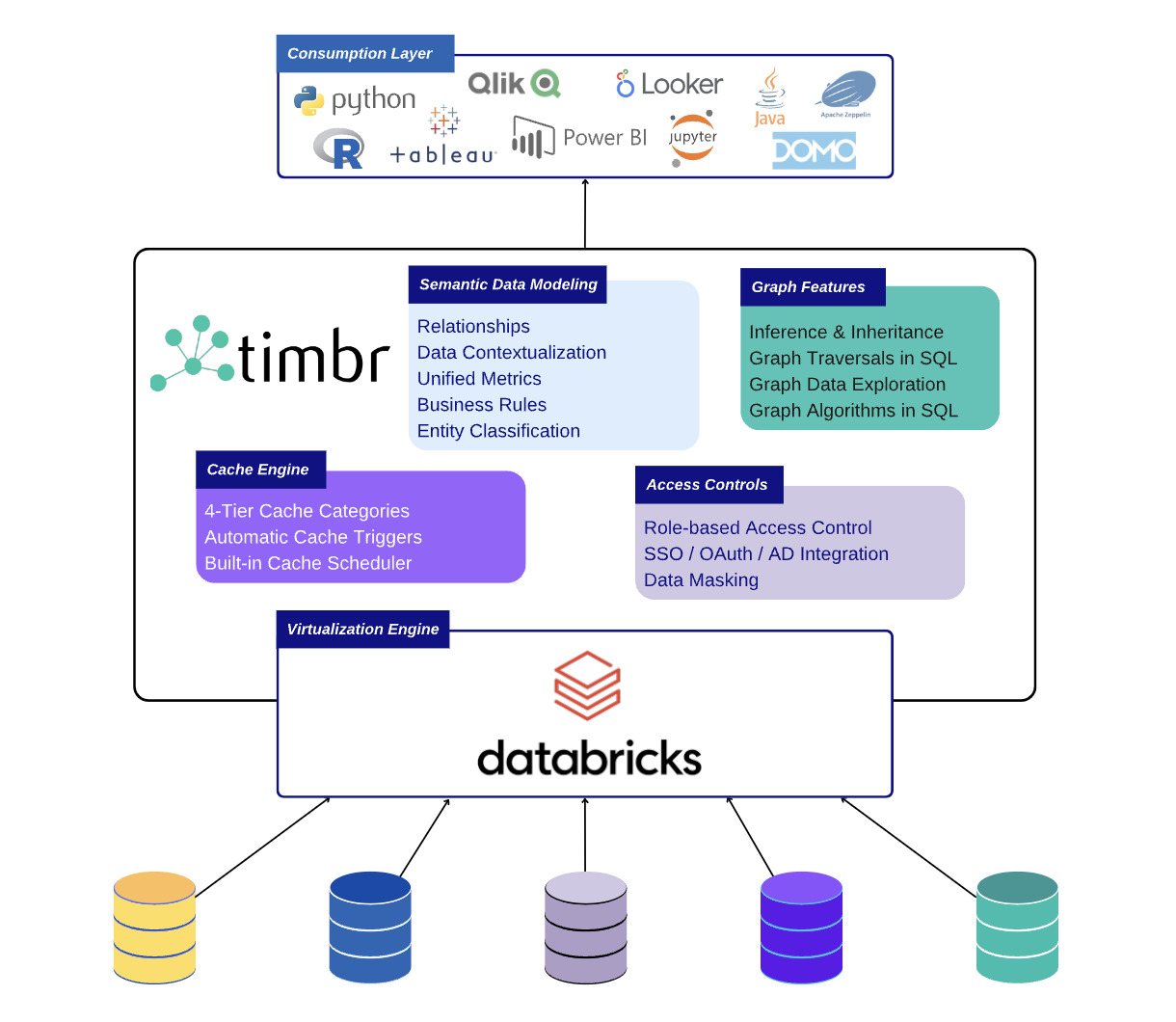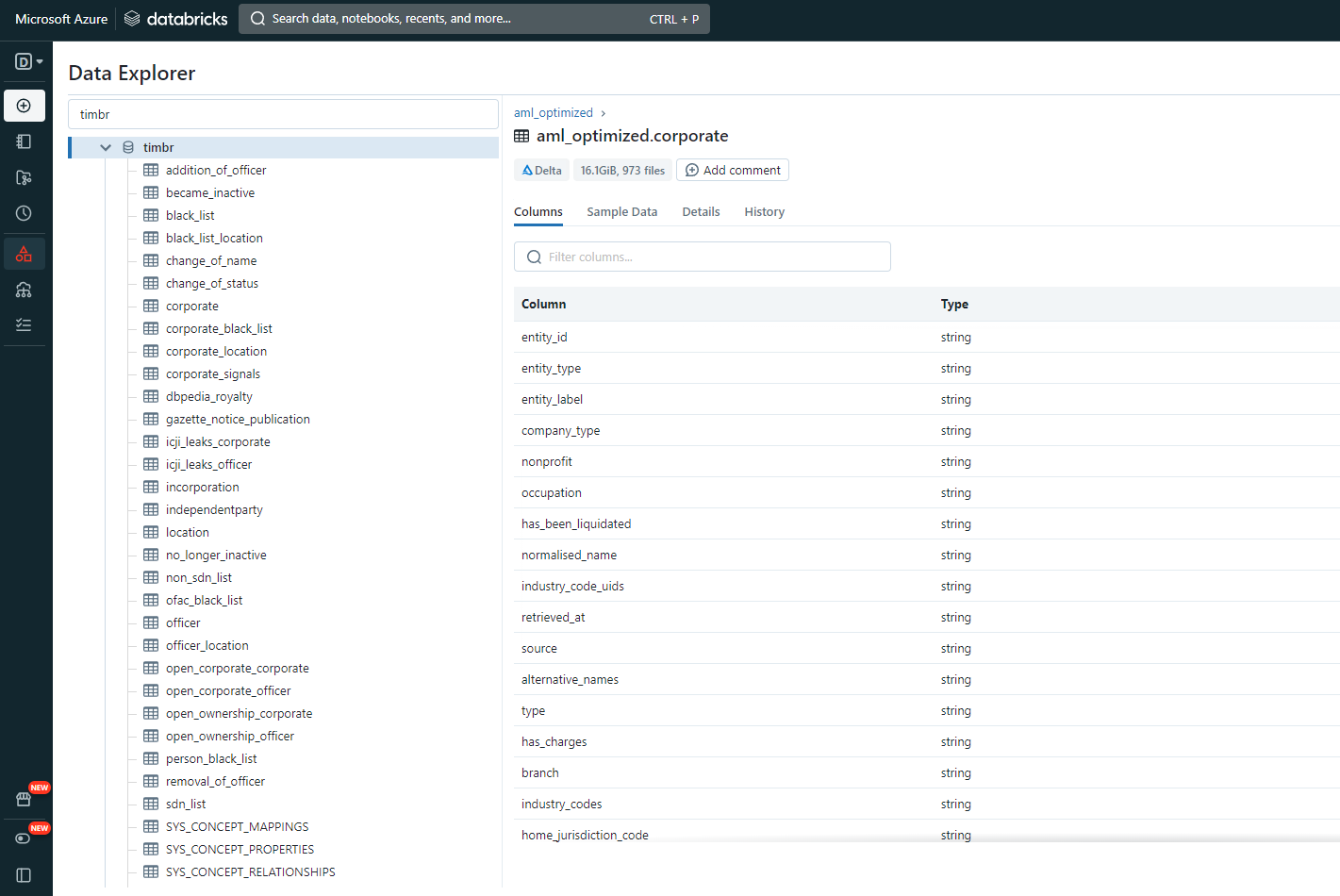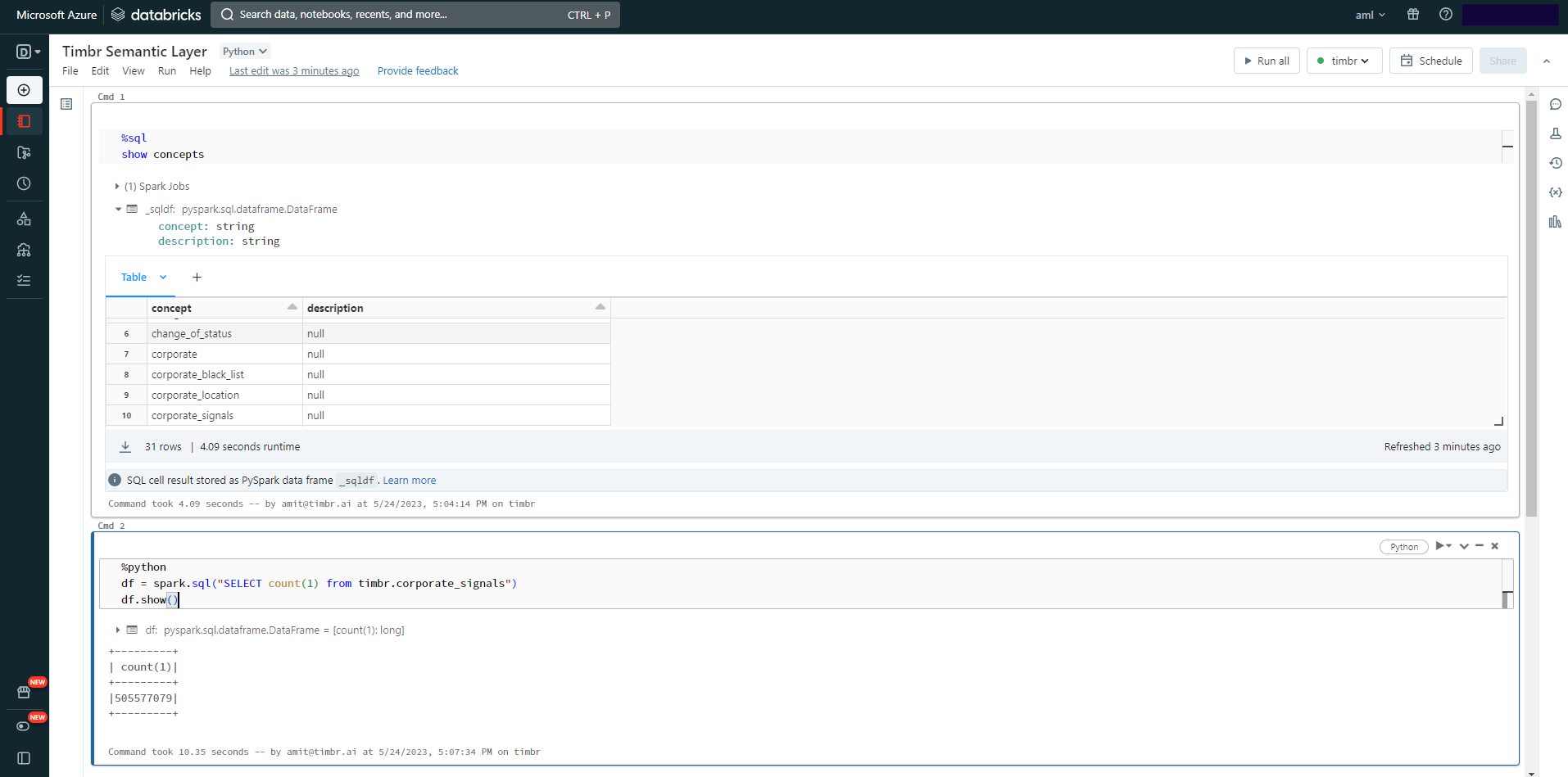Introduction
The Timbr Platform, combined with Databricks, offers a powerful solution for creating and utilizing scalable semantic graph data models accesible in SQL for big data environments to efficiently integrate, manage, and share data across teams and business functions.
This article explores how Timbr integrates with Databricks and how Timbr is seamlessly exposed with Databricks’ Unity Catalog.
Timbr – The Intelligent Semantic Layer
Timbr enables users to create virtual data models that present Databricks datasets as business concepts enriched with semantic relationships and explicit business context. The virtual data models can connect to any tool or application used for data consumption.
A virtual data model in Timbr is presented as a hierarchy of business concepts (Ontology) which entails logical business definitions and metrics, semantic relationships that replace JOIN statements, and the ability to integrate data from multiple sources into a contextual data model that lives within the organization.
The models are versioned and controlled, fully supporting any access level to enable meta-data management and intuitive data discovery. The data models in Timbr can be automatically imported from an existing data model or by using standard SQL create statements. When mapping data to the model, users can apply any transformation or function that the connected database supports to continue and support the exact requirements.
Semantic Data Virtualization with Timbr and Databricks
Timbr combines with Databricks to deliver a powerful semantically enabled virtualization engine, for ultra-fast processing of large-scale data scattered across multiple databases. Users can conveniently consume distributed or siloed data and join the information using a Databricks cluster as the execution engine.
Time-to-value of data projects decreases dramatically as data discovery and sharing becomes a natural and easy task for any user. Users can now focus on extracting insight from the data instead of dealing with siloed in-app modeling or transformations.
Timbr & Databricks' Unity Catalog native integration
Timbr also exposes the metadata in the Unity Catalog for convenient governance, and users can enable SSO from Databricks to Timbr to align security and access controls. Users can query Timbr business concepts directly from Databricks notebooks, in SQL , Python, R and Scala.
In addition, Databricks Catalog Explorer exposes Timbr semantic schemas to provide a better, clearer understanding of data to accelerate data products workflows.
By leveraging Timbr’s native integration with Databricks and its transformation capabilities, organizations can create scalable semantic graph models and maximize the utilization of their data. The integration allows organizations to query across all data sources, use contextual relationships, accelerate complex analytics, and make data-driven decisions with confidence.
Contact us today to create your Semantic Layer with Databricks.

